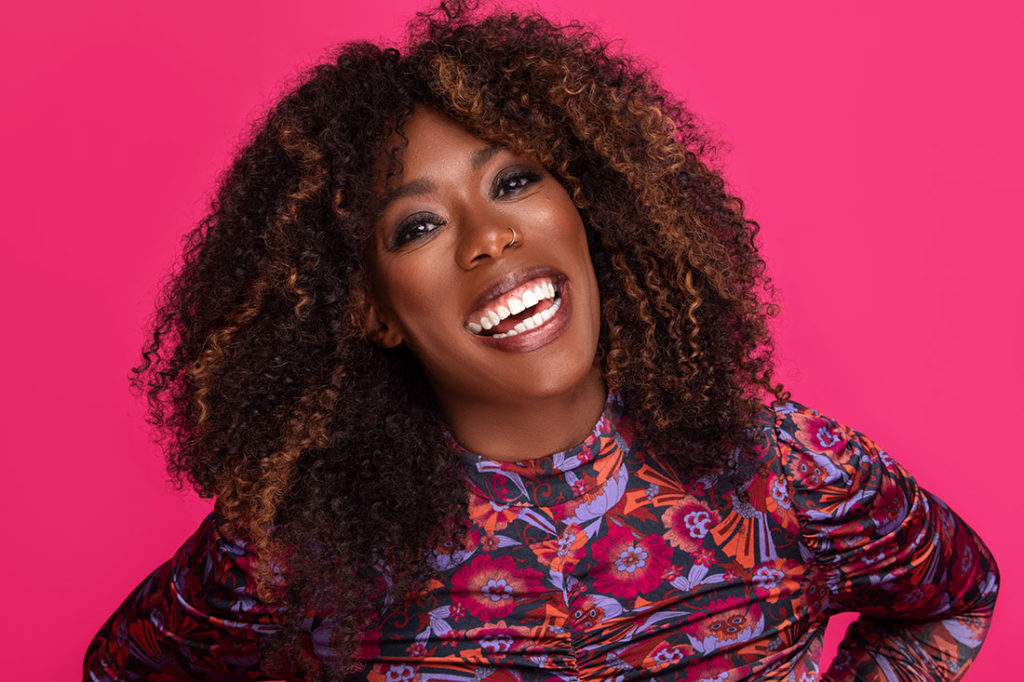Language is a challenge when it comes to the words we use to describe race and racism. It’s constantly evolving to become more specific, expansive and inclusive. It’s also constantly being co-opted or weaponized to undermine its effectiveness.
Just look at what happened to the word “woke.” The word comes from the phrase, “Stay woke,” a longtime rallying cry of the Black American civil rights movement. That cry was a reminder to Black Americans to remain aware of the injustices they faced and the dangers posed by white people. It was a warning against complacency during a time when complacency could mean death.
Appropriately, the phrase “Stay woke” reappeared in 2014 as Black death started to fill our Twitter timelines and Black citizens took to the streets in Ferguson, Missouri. It became a rallying cry for the Black Lives Matter movement, and the hashtag #staywoke encouraged people to pay attention to the atrocities happening in Ferguson and the larger specter of impunity for officers who killed Black people.
Language is fluid. It evolves, gets appropriated, gets weaponized, is reclaimed, and on and on. Nowhere is this more true than with words and ideas that have been politicized.
With that caveat, I thought it best to start with a primer, introducing language and clarifying some of the concepts I utilize when I talk about race today.
What Is Race?
Before we define racism, we should first define race.
It would be fair to say that I am not sure. It would be fairer to say that I have been wrestling with this question most of my life and I still feel like I come up short.
I know race is the thing that made all of the difference. I know it is often the first aspect of my identity that people refer to when they describe me. I know it helps me create community with some and puts me in danger with others. It is my hair, my skin, my butt, my nose, the origins of my ancestors, our history. That much I know
I also know I learned I was Black in first grade.
That year, my mother pulled me out of my small Christian private school and put me into public school. Prior to that transition, I had been sheltered (though not in the way that you might think). My private school was incredibly diverse. My mother was a substitute teacher there. I never had cause to interrogate my identity or focus on my racial difference, because no one else did either. Not so in my all White public school, where I both stuck out like a sore thumb and seemed invisible at the same time.
I struggled to understand why things at the school I was so excited to attend felt so different… so much worse.
A boy named Scott helped me solve that mystery. We were on the playground doing some activity that required us to hold hands. Scott refused to hold mine because I was Black. I tried not to cry. The teacher pretended not to see. And that was the day I learned what Blackness meant.
Blackness is relative. Race is relative, which makes it hard for me to say definitively what it is.
What Is Racism?
It’s sometimes a struggle to get my clients to even say the word “race.” Until recently, for most of my clients, whether executives or heads of human resources, saying the actual word “racism” seemed almost impossible.
In our consultation calls, they would so eloquently tell me about the struggle that (White) women in their organization faced, the depths of their own unconscious bias that they had explored, their need for representation across the spectrum “in terms of gender, age, socioeconomic status, and… ” There was always a pause here. It’s a pretty awkward pause—hard for me, necessary for them. For the vast majority of these people, race felt taboo to acknowledge, and racism seemed like much too serious an allegation to even name.
Of course, after we started working together, when I spoke to the other Black and Brown employees who worked at these companies about their experiences, they had no problem saying the word. For them, racism wasn’t a taboo construct but a real aspect of their daily lives that impacted the way they navigated their workplaces.
This divergence is understandable. It can be hard to identify racism at work because we struggle to define it generally. Ultimately, we can say that racism is the system of race-based preference, expressed interpersonally or institutionally, backed by political, social, cultural and economic power, which is also embedded into our rules and institutions.
I find this definition of racism useful, especially in the workplace, because it acknowledges the historical racist influence embedded in our labor market and American corporate culture and connects it to our broader social condition. It forces us to reckon with our history, and it doesn’t leave room for a contextual analysis.
Understanding the Spectrum of Racism
It’s one thing to read a definition of racism in a book, and quite another to know if you currently work in an environment that is racist. So how can we be certain that the people and institutions we interact with are actually racist?
That’s the wrong question to ask.
Instead, shift your focus away from intent and toward impact. Focusing on intent and certainty demands that we make sure we know what’s in the heart of those persons or institutions that engage in a potentially racist action before deciding on an appropriate response. That standard asks us to judge their character instead of what they have done. Conversely, a focus on impact understands that it’s difficult and counterproductive to ascertain intent. Instead, we can look at the action perpetrated by the person or institution and the harm that it caused. Instead of centering the privileged, this perspective centers the experience of the marginalized. A focus on impact sets us up much better to move toward a constructive discussion of solutions that address the harm, as opposed to frustrating circular conversations around intent.
Taking these circumstances into account, racism can manifest in several ways.
Microaggressions
Originally coined by Harvard psychiatrist Chester M. Pierce, MD and popularized by Dr. Derald Wing Sue, the term “microaggressions” refers to the small, everyday slights, intentional or unintentional, that remind those from marginalized groups that they are different. These slights can take the form of offhand comments, jokes, backhanded compliments or insults.
Microaggressions are challenging to handle because of their subtlety. They are easy for targets to question, bystanders to ignore, and perpetrators to deny.
Unconscious Bias
Unconscious bias refers to the bias that we all hold, informed by social stereotypes, about various identity groups. These biases unconsciously manifest in discriminatory behavior as our brains take cognitive shortcuts.
I believe that we overemphasize discussions of unconscious bias. When we attribute racism to unconscious bias, we alleviate the personal responsibility of those who hold it, maintain focus on the intent of the person holding the bias, and fail to acknowledge the role of power in perpetuating bias. That said, the term does still serve a purpose, and I would be remiss not to include it here. The unconscious bias framework is useful in that it takes the taboo away from having bias, making it easier to start conversations about bias with less defensiveness.
Interpersonal Racism
Interpersonal racism refers to the racist interactions that occur between people because of an individual’s racist beliefs, biases, assumptions or actions.
Interpersonal racism encompasses a spectrum of behavior. It can be overt or subtle. It can be conscious or unconscious. It can take the form of microaggressions or just plain aggression. It can happen with just one other person or with a group of people.
Bias and racism, however, are not the same thing. Bias can be about a lot of things—race, gender identity, disability, age, socio-economic background. Racism is just about race.
Structural Racism
Structural racism refers to the system of policies, cultural practices, institutions and ideologies that work together to create and reinforce racism. Structural racism endures over time regardless of individual action or intent, and also manifests in the workplace. Hiring practices like in-network hiring and referrals introduce and solidify racial disparities. A preference for a strong “culture fit” tends to disproportionately impact those from underrepresented racial groups, who may be seen as outsiders. And in many places, a glass ceiling exists for Black and Brown people, who are kept out of positions of leadership.
Intersectionality
Intersectionality refers to the ways in which those holding multiple marginalized identities can experience compounding or entirely unique forms of marginalization.
At work, intersectionality can be helpful in understanding the unique experiences of those holding multiple marginalized identities and responding to their needs. But it goes far beyond race and gender; older women, disabled women, trans women and queer women all face unique marginalization at work. The marginalization can be even more severe where these identities overlap. Supporting all women means understanding the ways that the unique interplay of race, gender, sexuality, class, disability and immigration status affects their experience at work.
As a Black woman, I think of most of my experiences with marginalization as intersectional experiences. It’s hard to tease apart my race and my gender to identify which of these might be motivating bias that comes my way. Even where there is only one differentiating factor between me and someone else—race when I’m experiencing microaggressions from a White woman or gender when I’m being talked over by a Black man—it’s hard to know if these experiences are happening because I am Black or a woman or Black and a woman.
Lately, the term “intersectionality,” like “unconscious bias,” has entered the popular lexicon. And like “unconscious bias,” the term has been misused or used in such a way as to undermine antiracist efforts. I commonly hear the word “intersectional” used to refer to any aspect of identity, whether it’s inherent or chosen—like hair color, eye color, or clothing style—whether or not those traits are sources of marginalization. Once, at a conference I heard my co-panelist, a blond White woman, refer to blond hair as a source of intersectional identity. This line of reasoning encourages people to conclude that ultimately everyone is impacted by intersectionality. Doing so diverts attention from genuine marginalization, which disproportionately impacts people of certain identities, and toward identity generally, which is something we all have. It renders the term meaningless.
Another common mistake that people make is calling others or themselves “intersectional.” In those cases, intersectionality becomes a concept to describe individuals instead of the marginalization they face. The effect is similar. The focus is taken off of the marginalization and put on identity, undermining the true meaning of the term.
Antiracism
Antiracism is a term that refers to intentional actions and efforts to actively undo or counter interpersonal, systemic and other forms of racism.
The concept of antiracism is often situated in contrast to nonracism. Some see reactions to racism as a spectrum, with racist and antiracist on each end and nonracist as the default neutral. Proponents of antiracism believe that so-called neutrality—not actively fighting racism—allows racism to persist, and so is itself racist.
From HOW TO TALK TO YOUR BOSS ABOUT RACE: Speaking Up Without Getting Shut Down by Y-Vonne Hutchinson, with permission from Portfolio, an imprint of the Penguin Publishing Group, a division of Penguin Random House, LLC. Copyright © 2022 by Y-Vonne Hutchinson



